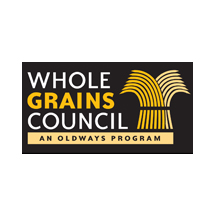 Customers are turning to whole grains—especially at breakfast—for the health benefits they provide.
Customers are turning to whole grains—especially at breakfast—for the health benefits they provide.
Health-conscious customers are eating their whole grains according to the “2015 Whole Grains Consumer Insights Survey,” a new study released from Oldways Whole Grains Council (WGC) just in time for September, which is Whole Grains Month.
According to the study, nearly two-thirds of Americans are following dietary guidelines to make at least half of their grains whole grains, and the majority of Americans are eating more whole grains than they did five years ago.
“For years, most people came nowhere close to whole grain recommendations, so it is encouraging to see that many are now benefiting from switching more of the grains they eat to whole grains,” said Cynthia Harriman, director of food and nutrition strategies, Oldways Whole Grains Council. “The next step is tempting Americans to expand their whole grain palates beyond bread, cereal and brown rice to delicious grains like spelt, farro, amaranth and teff.”
The push toward whole grains comes as studies show that eating whole grains lowers the risk of many chronic diseases, including heart disease and diabetes. Other benefits include reduced risk of asthma, healthier blood pressure levels and better weight control.
For the survey, the Oldways Whole Grains Council asked Americans about their whole grain habits and here’s what they found:
Whole grain consumption is up
Nearly two-thirds, or 64%, have increased whole grain consumption “some” or “a lot” in the last five years.
Whole grain lovers really love their whole grains. In fact, two in three respondents who nearly always choose whole grains now have increased their whole grain consumption a great deal compared to five years ago.
Choosing whole grains more often
Almost one-third of respondents (31%) said they nearly always choose whole grains. Five years ago, just 4% would have said this.
Another 32% choose whole grains about half the time.
That means 63% are making more than half their grains whole, good news since the 2015 Dietary Guidelines, due out this fall, are expected to continue with this recommendation as they have since 2005.
Whole grains are popular morning fuel
Breakfast remains the biggest eating occasion for whole grains, followed by dinner and then lunch:
On average, 37% of daily whole grains are consumed at breakfast, 27% at dinner, 22% at lunch and just 14% as snacks.
People eat nearly 30% more whole grain breakfast cereal (hot or cold) than refined.
Health messages are getting through
Nearly nine out of 10 (86%) of those who consume whole grains do so for the health benefits.
Forty percent choose whole grains because they enjoy the taste.
Cost was named as the leading barrier to eating more whole grains (39%).
Availability can also be a barrier (28%) – as many restaurants don’t offer whole grain choices.
Gluten confusion
Few fully understand gluten. While more than one in three identify gluten as a protein and one in five know it makes dough rise, only 4% correctly selected both (and no other options).
Twenty-one percent incorrectly think gluten is in all grains. In fact, gluten-free doesn’t mean grain free—even those following a gluten-free diet can enjoy grains such as amaranth, buckwheat, corn, millet, oats, quinoa, rice, sorghum, teff, and wild rice.
Some 93% eat gluten some or all of the time. Of the 7% who completely avoid gluten, only one in five has a medically-diagnosed problem with gluten.
Top 5 Favorite Whole Grain Foods
- Whole Wheat Bread (31%)
- Oatmeal (27%)
- Popcorn (15%)
- Whole Grain Cold Cereal (15%)
- Whole Grain Pasta (8%)
Time to discover other whole grains
Whole wheat, oats and brown rice are the most popular grains.
Nine out of 10 have heard of these grains and most have eaten them.
Yet, fewer than one in five has heard of spelt, farro, amaranth, Kamut or teff.
The Whole Grain Stamp is known and trusted
Forty-nine percent of people are aware of the Whole Grain Stamp.
Eight out of 10 (82%) trust the Whole Grain Stamp to accurately state a product’s whole grain content.
Seventy-nine percent (79%) said the Whole Grain Stamp would make them more likely to buy a product; about half of these would also consider sugar, sodium and other product factors.
About half (51%) said they would question a product’s claims about whole grains if they did not see the Whole Grain Stamp.
To celebrate Whole Grains Month, WGC is launching a “Share the Goodness of Whole Grains” Instagram photo contest, running Sept. 1-30, 2015. To enter, follow the Whole Grains Council on Instagram (@Whole_Grains_Council) then upload a photo with a description telling how you shared your whole grain goodies with others using the hashtag #ShareWholeGrains.




